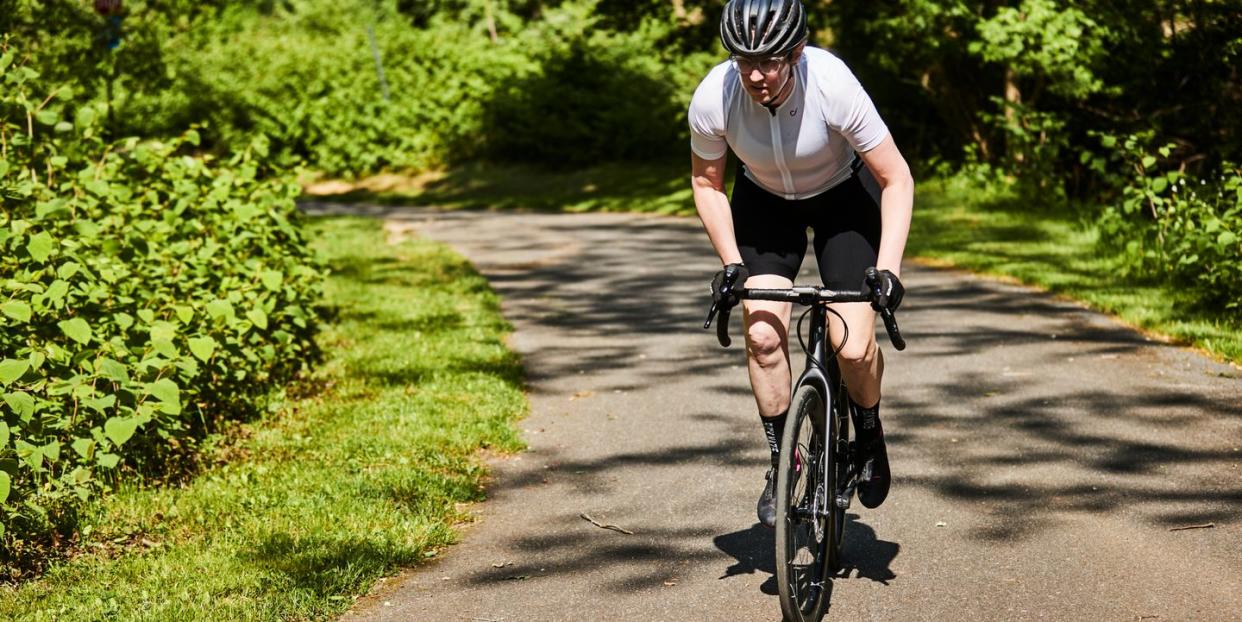To Gain More Heart Health Advantages from Exercise, It’s Time to Crank Up the Intensity

A study published in the European Heart Journal, looked at nearly 72,000 participants who wore fitness trackers that provided exercise intensity data and found that those with the lowest cardiovascular disease rates were those who participated in higher intensity activity consistently.
Vigorous physical activity can be measured by the talk test—you should only be able to say a few words—and only about 15 to 20 minutes weekly was associated with up to 40 percent reduced mortality risk.
The physical activity guidelines for Americans from the U.S. Department of Health and Human Services suggest adults should do at least 150 minutes of moderate-intensity exercise or 75 minutes of vigorous-intensity activity every week. But new research suggests that if you choose only that first option, you might be missing out on a major way to reduce cardiovascular disease risk.
The study, published in the European Heart Journal, looked at nearly 72,000 participants who wore fitness trackers that provided exercise intensity data. This is important because most large-scale studies on intensity and volume of exercise tend to rely on participant questionnaires, according to lead author Paddy Dempsey, Ph.D., research fellow at the University of Leicester in the U.K.
He told Bicycling that it’s difficult for people to recall all of their activities accurately, particularly with everyday tasks not classified as exercise. For example, running to catch the bus would be a form of vigorous-intensity activity, but likely wouldn’t get recorded on a self-reported questionnaire.
Using that data, researchers compared activity frequency and intensity to development of cardiovascular disease over a period of nearly seven years. They found that total physical volume was strongly associated with a decrease in cardiovascular disease risk, and that connection was particularly strong in those who regularly undertook moderate-to-vigorous physical activity. Participants with the lowest cardiovascular disease rates were those who did higher intensity activity consistently.
Vigorous physical activity of about 15 to 20 minutes weekly was associated with up to 40 percent reduced mortality by the end of the follow-up period, compared to those with lower volume and intensity of exercise who did not see this advantage.
“What we found is that there are considerable benefits that are well under the current, recommended 75 minutes per week of vigorous physical activity,” said Dempsey. “Even just 15 minutes can make a difference.”
This is an important takeaway, he added, because previous research suggests only 20 percent of middle-aged to older adults report engaging in any vigorous exercise for at least 15 continuous minutes. But an exercise session doesn’t need to be continuous, he said.
“Our results show that short bouts that last up to two minutes, when done four times a day was associated with substantially lower mortality risk,” he said. “These can stimulate the cardiorespiratory system and lead to measurable cardiovascular adaptations.”
Another recent study had similar conclusions. Published in the journal Circulation, and looking at about 95,000 participants who wore fitness trackers over a two-year period, researchers found that modest amounts of moderate-to-vigorous exercise lowered heart failure risk—but that the more vigorous activity participants had, the bigger the risk reduction.
How can you apply this to your next ride? The definition of moderate-to-vigorous intensity is individualized, according to commentary in the journal Frontiers in Physiology. One simple way to gauge is through the talk test—when doing vigorous activity, you will not be able to say more than a few words without pausing to catch your breath. Using that as a guide, doing some sprints for at least a few minutes could give your heart a welcome boost and possibly improve your cycling performance, too.
You Might Also Like

